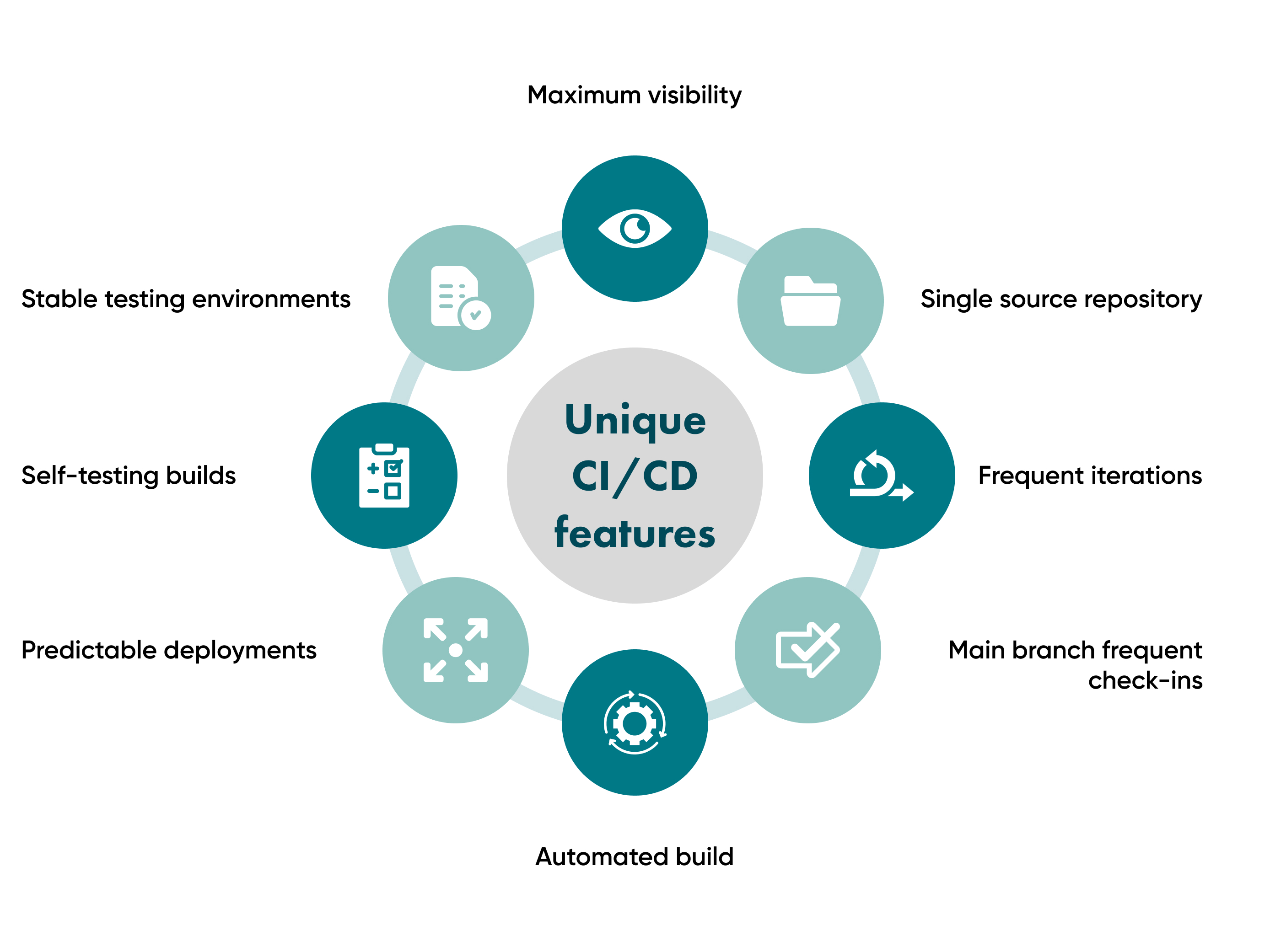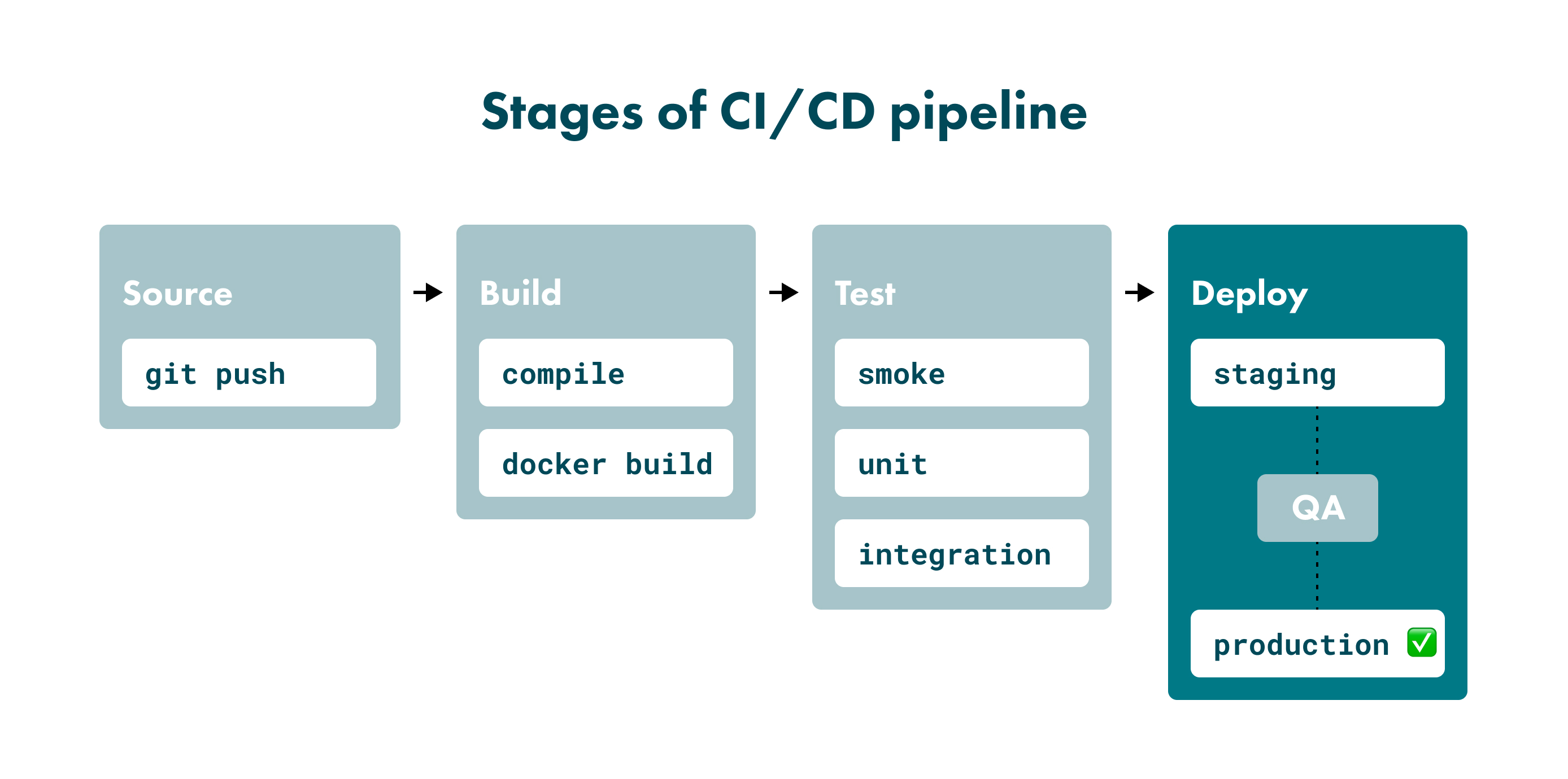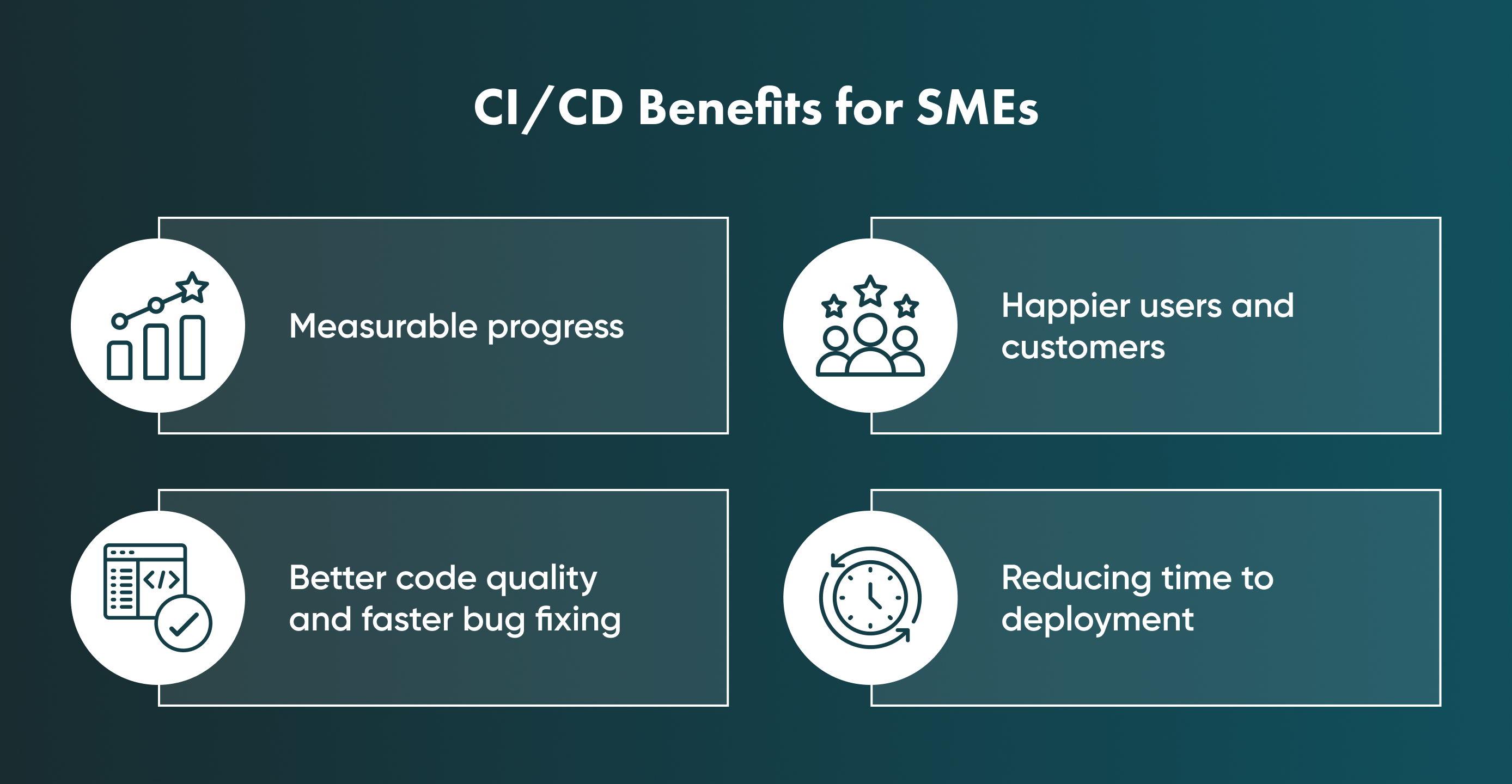Continuous Integration and Continuous Delivery (CI/CD) in Software Development


How CI/CD can be incorporated into a project to enhance its efficiency and accuracy
It's not a secret that constant and wise improvements lead to success. We are used to updating our hardware and software and looking for a way to be more effective all the time. Our experience shows we also have to update our strategies and the vision of the current state of things to stay in touch with reality.
CI/CD has become one of the essential instruments we can use to improve our work processes and make them beneficial for clients, DevOps, and business owners.
This article is an introduction to the basic information about CI/CD processes.
What are CI and CD?
Continuous Integration (CI)
Continuous integration is the first stage companies start to work on their way to implementing continuous integration and continuous delivery. This is a methodology meant to reduce code merge issues. Those issues usually occur when changes in code or code branches are not synchronised between different developers or development teams. Without continuous integration, conflicts in code wouldn't be found until the late stages of the coding phase.
Continuous Delivery (CD)
The purpose of continuous delivery is to monitor if the final code can be effectively deployed into any considered environment. Also, continuous delivery and continuous deployment are meant to automate the releasing process or provisioning of the infrastructure.
The end of the continuous delivery gives a starting point for the next stage - continuous deployment.
What's the difference between CI and CD?

In short, CI is a set of mechanics and tools that are followed while developers are working on the code, CD, on the other hand, is a set of quality testing practices that are performed after the code is done.
On a case-by-case basis, timing depends on how automated the CI/CD pipeline is. Many enterprises start by adding CI and then progress to automating delivery and deployment, such as within cloud applications.
Before we start: CI/CD fundamentals

Single source repository
A single-source repository is also known as a single source of truth (SSOT). This element's purpose is to keep source code in one place instead of being scattered in numerous storage points. As a result, everybody who needs to work on the build uses the exact version of the information.
The code repository includes version control, database structure, libraries, properties files, test scripts, scripts for building applications, and source code. All those elements are needed for the build.
Frequent iterations
Multiple commits to the repository results in fewer places for conflicts to hide. Make small, frequent iterations rather than major changes. By doing this, it's possible to roll changes back easily if there's a problem or conflict.
Main branch frequent check-ins
Keep track of integrating code in your trunk or master branch. It's essential to insist on using only the main branch and avoiding sub-branches. Instead, use small segments of created code and try to merge them all into the branch. Remember, do not merge several changes at a time.
Automated build
Scripts should include everything you need to build from a single command. This includes web server files, database scripts and application software. The CI processes should automatically package and compile the code into a usable application.
Maximum visibility
This aspect of managing the project is still one that is hard to implement completely. Sometimes visibility requires fundamental changes in the working process and additional applications.
Thankfully, CI/CD allows constant monitoring of the changes by all members by checking the version control and giving access to all the repository changes.
Stable testing environments
CI/CD provides the development teams with a testing environment that is safe to use, like a field for running tests. The clone production version is important because we can't test a single line of code in the original product version.
Self-testing builds
Testing scripts have to ensure that the failure of test results in a failed build. Use static pre-build testing scripts to check code for integrity, quality and security compliance. We recommend only giving a pass to the code that successfully passed static tests.
Predictable deployments
Deployments are so routine and low-risk that the team’s comfortable doing them anytime. CI/CD testing and verification processes should be rigorous and reliable. This gives the team confidence to deploy updates at any time. Frequent deployments incorporating limited changes also pose lower risks and can be easily rolled back.
CI/CD is an important integral aspect of software development for the Go Wombat teams. To find out how we can help develop your future projects contact us today.
What is the CI/CD pipeline?
In simple words, continuous integration and the delivery pipeline is a set of steps to deliver a new version of the software. CI/CD pipeline connects tools, people, and strategies and makes them a part of the DevOps pipeline.
The CI/CD pipeline may be run manually. However, the best practice is to automate this process.
Let's look at the steps we take while performing the pipeline. The CI/CD pipeline process consists of the following stages: source, build, test, and deploy.

Source
The source contains the initial source code repository and any change in the code triggers CI/CD tools to automatically apply modifications. User-initiated processes, programmed timelines, and the outcomes of other pipelines are other typical triggers. The process begins with a Push-request, written manually, which causes the development of Webhooks to run the pipeline.
Build
This stage comprises an app with its source code repository. In fact, the build stage is not necessarily useful for such languages as Python, JavaScript, and Ruby. The inability to pass the build phase indicates a basic project malfunction, which should be addressed as soon as possible.
Test
The implementation of automated tests to check the validity of code and the functionality of the program is included in the test phase. This stage’s automation facilitates the quality assurance for the running code.
Testing eliminates potentially repeatable issues from making their way to the customers. Besides, here the Merge stage happens, which is responsible for the finalisation of the assessment, needed before the release to the source code repository.
Deploy
This is the last step of the CI/CD pipeline, and it’s done if the previous testing and merging go without conflicts and errors. Deployment means your code goes to the servers, like Azure or AWS to make it functional.
To discover how Go Wombat can utilise CI/CD with your next project, call us for a confidential chat.
Why is CI/CD important?
Every team works hard to provide clients with the best result possible. However, working smart is a more ecological way to produce high-quality products. Updating your usual work processes helps to leave business competitors behind.
Also, it's a step forward to standard processes in the development teams. For example, avoiding CI/CD sometimes leads to running tests in a different order or unintentionally excluding minor stages.
The reason behind these unpleasant mistakes is a pipeline that is not standardised for everybody. However, automating merge, delivery, testing and deployment help to work with the set structure.
What is the role of CI/CD in Software development?
First, let's clarify what software development is. The software development process leads to producing software applications by DevOps teams. During this process, projects go through development, testing, deployment, and monitoring stages.
CI/CD is both agile and DevOps practices. The CI/CD tools are also a part of the broader DevOps/DevSecOps framework. In order to successfully implement and run a CI/CD pipeline, organisations need tools to prevent points of friction that slow down integration and delivery.
Teams require an integrated toolchain of technologies to facilitate collaborative and unimpeded development efforts.
What are the benefits of CI/CD?
Software development is a complicated process requiring both strong hard technical skills and creative thinking. However, poor work process planning cut almost all the Dev and Ops possibilities to be creative.
Automating CI/CD eliminates the need to spend excessive human attention and energy. Moreover, the developing team can be more assured of the final result as long as CI/CD minimises the human factor error. As a result, businesses get better-built projects with more innovations and happier DevOps teams.
Other benefits of continuous integration or/and continuous development are measurable progress, better code quality, fast bug fixing, and smoother production. Let's have a closer look at some of them.

Measurable progress
This aspect helps to keep the team motivated and productive. Also, it's a way to find the weak sides of the pipeline in the early stages and change the process before time losses increases. The metrics CI/CD tools provide help make failures measurable and make success visible.
Better code quality and faster bug fixing
Early found code bugs are a huge time-saving factor for DevOps teams. The main benefit is better overall code quality. If the bug was unseen, it's possible to build essential functionality on top of it.
However, fixing this problem takes more time and effort because a big part of the code was infected. So, investing in a quality CI/CD process with test automation leads to producing more high-quality code from the very beginning.
Happier users and customers
Fewer bugs and errors make it into production, so your users and customers have a better experience. This leads to improved levels of customer satisfaction, confidence and reputation. Also, CI/CD pipelines allow for substantially faster times to market for new product features, which leads to happier customers and less burden on development.
Reducing time to deployment
The significant improvement in total delivery speed allowed by CI/CD pipelines strengthens an organisation’s competitive advantage. Continuous delivery and continuous development teams can use automation to accelerate the development lifecycle as a whole.
Unlock Success with Premium Software Development
Contact us


Conclusion
People started to make life easier by task delegating a long time ago. Now we can delegate our work to the software. For example, CI/CD allows a team to stay focused on essential things that automated testing cannot replace.
Continuous integration and continuous deployment process take an important place in the software development process. It allows the deployment of the code frequently, reduces the overall deployment time, and makes developing processes flexible.
We, the Go Wombat team, would like to share our experience and expertise with you. So let us know about your needs and contact us.
How can we help you ?





